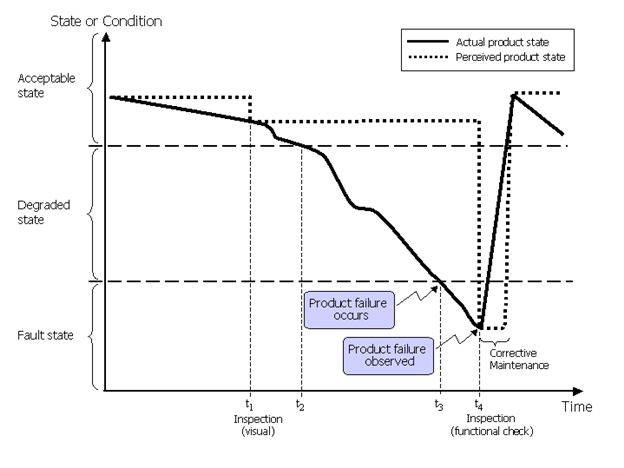
| DEX: (D002) fault_states — Faults related to products | Date: 2007/09/14 16:11:29 Revision: 1.28 |
The Fault State DEX deals with how a product can or may degrade in its functions or change the value of its properties. It is usual for the set of fault states to be derived from a formal analysis process such as Failure Modes and Effects Analysis (FMEA).
A set of basic definitions:
The information exchanged by this Dex is the set of "potential faults and relationships" produced as a result of the PLCS AAM activity A2224 "define potential faults".
NOTE The product functions may be represented by a functional_breakdown. Faults may be defined using the state_definition module.
EXAMPLE A bicycle has a breaking function. During a ride one could detect that the ability to decelerate or stop the bicycle as needed is no longer available, hence a failure has occurred. The bike is then in a fault state. There could be more than one sequence of events leading to this fault state. These are known as failure modes. Possible examples of failure modes are broken break cable or break block worn beyond limits.

This exchange enables the transmission of the data exchange set (DEX) Fault States
The Fault State Dex deals with how a product can or may degrade in its functions. It is usual for the set of fault states to be derived from a formal analysis process such as Failure Modes and Effects and Criticality Analysis (FMECA)
The analysis is an iterative process, potentially changing at each stage of the products life cycle. The initial analysis ideally conducted as early as possible in the product life cycle.
The formal analysis, such as FMECA, is conducted with the following objectives:
© OASIS 2010 — All rights reserved